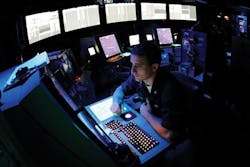Use of COTS components on the rise in U.S. military communications and surveillance applications
Spending for COTS components in military C4ISR will increase over the next five years, despite a flat market for military C4ISR applications overall, say analysts at market researcher Frost & Sullivan in Mountain View, Calif.
Cloud computing and big- data technologies will complement use of COTS-based smart phones, tablets, wireless networks, and productivity applications of all kinds through 2020, analysts say.
The DOD’s appetite for cloud computing as an enterprise network service will grow dramatically, despite lingering security concerns, analysts say in the report US DOD C4ISR.
A total of $39.54 billion has been earmarked for 2016 DOD programs for C4ISR, electronic warfare, and information operations, as well as multipurpose technologies, Frost & Sullivan experts say. This is an increase of 8.8 percent from 2015. The C4ISR spending will continue to grow at a compound annual growth rate of 1.4 percent during 2014 through 2020.
Related: Navy ready to issue solicitation for as many as 31 COTS instrument landing systems (ILS)
“Sharp procurement spikes without significant corresponding research reductions for ballistic missile defense, unmanned vehicles, and satellites resulted in a substantial uptick in requested 2016 C4ISR spending,” says Brad Curran, Frost & Sullivan aerospace & defense senior industry analyst.
Combat systems integration, collaborative targeting, and improved surface ship self-defense are priorities for the U.S. DOD through 2020, analysts say.
“With C4ISR products and services likely to experience price and technology upgrade pressure from the commercial process control, imagery, IT as well as energy and power industries, market participants must quickly revise their strategies for success,” Curran says. “Additionally, adequate emphasis on maintenance, spares, logistics, and training services will be essential for new sales.”
In 2014, the top 10 firms held 40.9 percent of U.S. DOD C4ISR contract value. Their growth rates and margins from hereon will depend on the extent to which they adapt to emerging market requirements.
For more information contact Frost & Sullivan online at www.frost.com.

